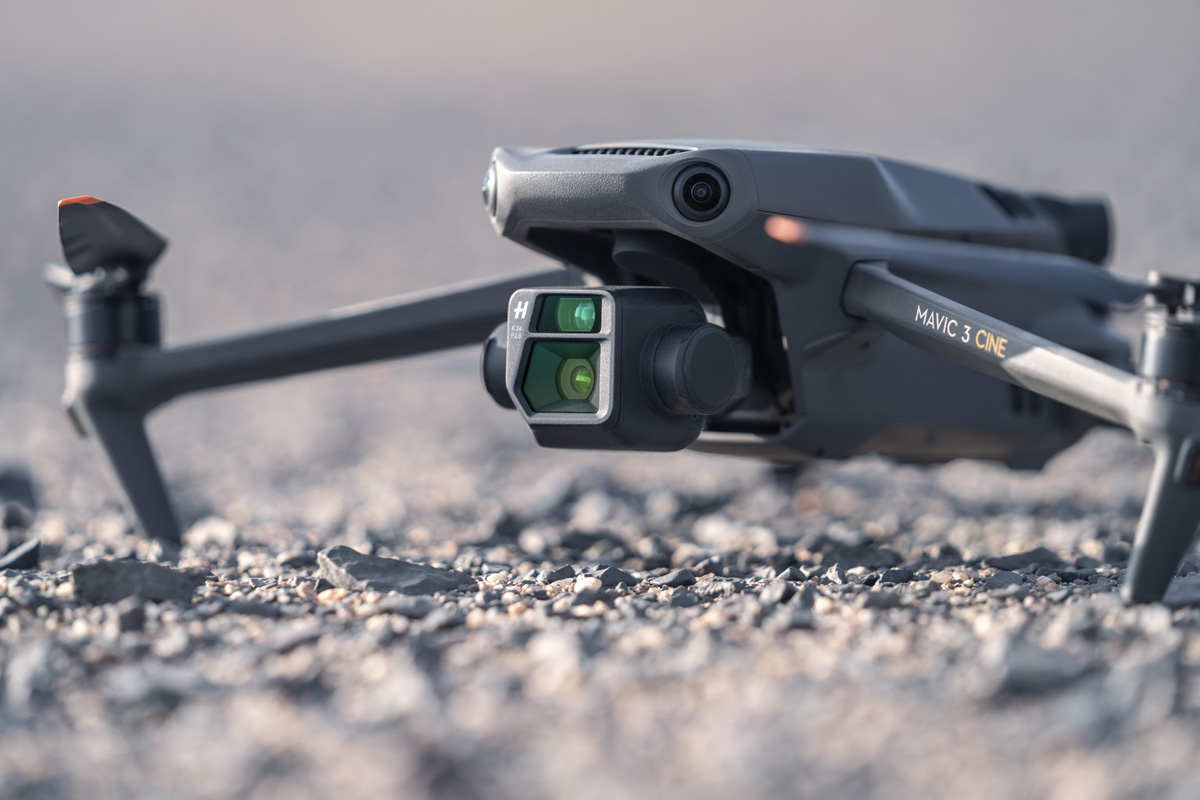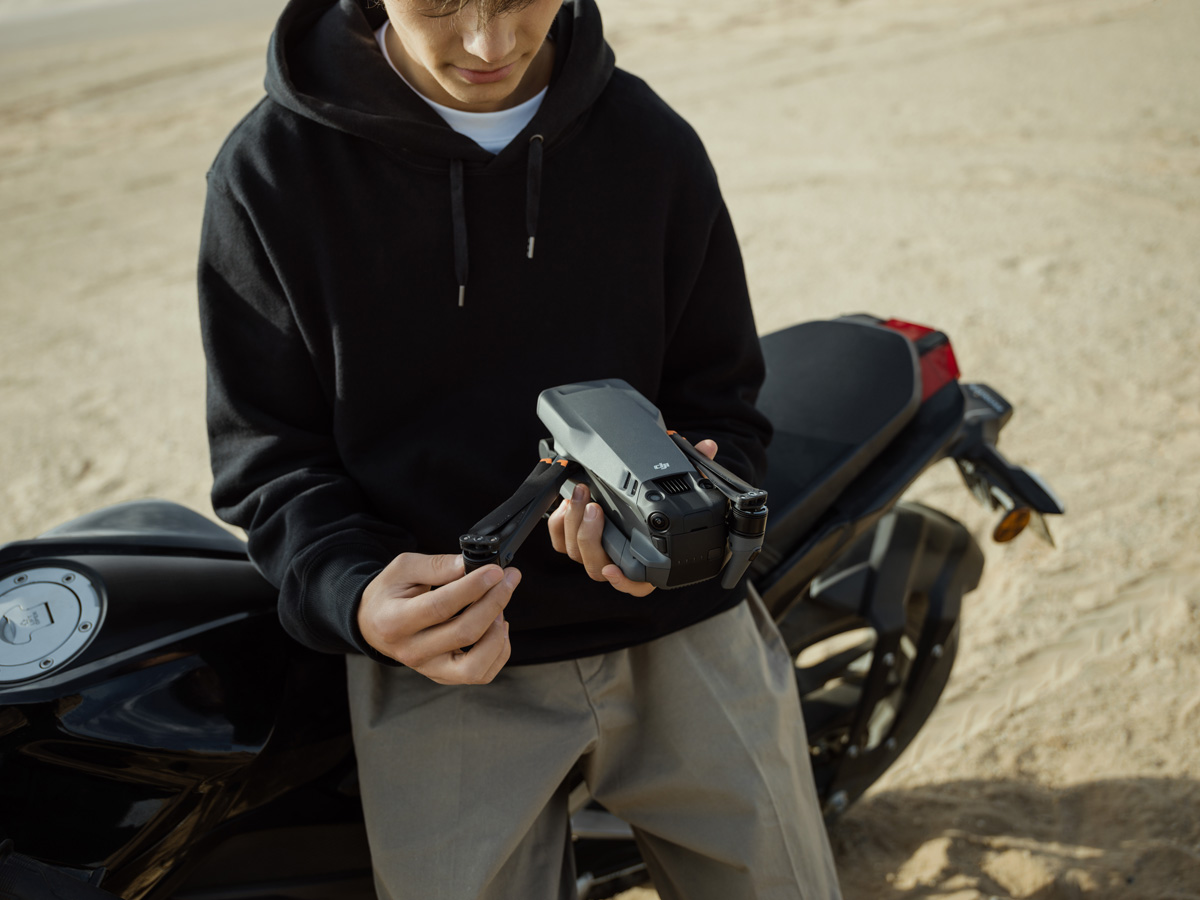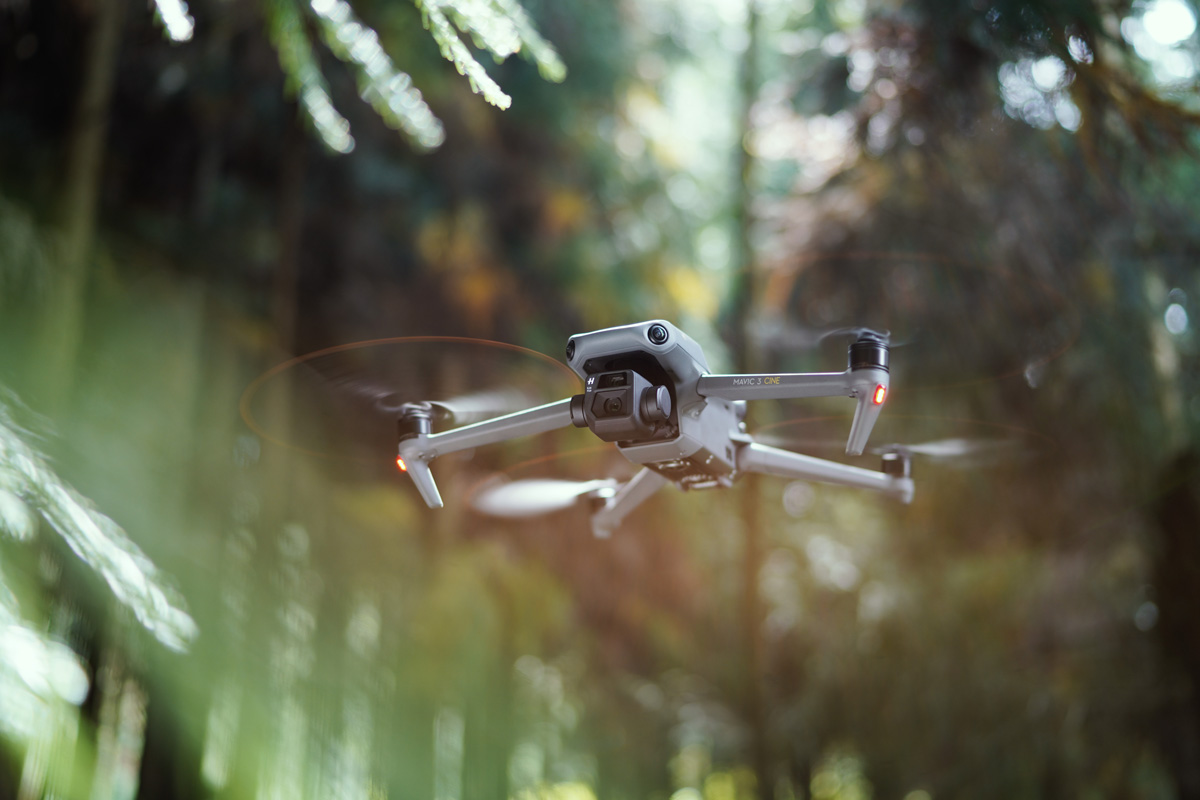What sets each DJI Mavic 3 model apart from one another is that the Cine variant comes with a built-in, non-replaceable 1TB SSD internal storage and is able to record Apple ProRes 422 HQ footage. Besides that, the rest of the hardware, features and design are pretty much identical. In flight, both drones can reach speeds of around 75km/h, which is a slight improvement over its predecessor’s 72km/h capability. That being said, the Mavic 3 series are equipped with the aforementioned dual camera system, which is housed in the same gimballed housing – a first for DJI and its drone line-up. The primary is a 24mm camera powered by a Hasselblad Four Thirds sensor with a variable aperture of f.2.8 – f/11, which is capable of capturing stills at 20MP in 12-bit RAW and recording videos at 5.1K resolution at 50 fps (frames per second) or 4K at 120fps. Meanwhile, the secondary is 12MP f/4.4 telephoto with a 162mm lens that is capable of hybrid zooming (optical + digital) at 28X and recording 4K videos at up to 30fps. On the subject of video captures, colour profiles featured in the Mavic 3 series include Hasselblad’s Natural Color Solution and also 10-bit D-log. Encoding-wise, there’s no HDR option but both drones can shoot in H.264 and H.265 profile. As with any new iterations of DJI’s flagship drones, you can expect plenty of new and improved features included together with the Mavic 3 series. Both drones come with upgraded omnidirectional obstacle sensing that can now detect objects that are 200m away, which is a vast improvement over the 20m range of its predecessor. There’s also DJI’s proprietary OcuSync 3+ transmission technology that enables the drones to be operated as far as 15km as well as transmit 1080p at 60fps live feed to your smartphone or controller. In terms of flight enhancements, the DJI Mavic 3 series are equipped with Advanced RTH (return to home) and APAS (Advanced Pilot Assistance System) 5.0. The former enables the drone to plan out a more intelligent flight path on its way back to the operator, while the latter helps pilots to plan out routes when flying the device manually. DJI says an upgraded version of the drone’s tracking system, ActiveTrack 5.0, will be released via a future firmware update. This feature enables the Mavic 3 series to track and follow subjects while flying in any direction, even if they go out of frame. As mentioned earlier, the flight time of both Mavic 3 models greatly exceeds its predecessors. This is thanks to the larger 5,000mAh battery which enables them to fly at up to 46 minutes, or so DJI claims. Included out of the box along with the drones is a 65W portable charger that provides 65W fast charging via USB-C. According to DJI, the new drones are offered in three different bundles upon release. The first being the Mavic 3 Standard version at RM9,799, which comes with the regular variant of drone, one intelligent flight battery, a RC-N1 remote controller, three cables, battery charger, spare propellers, storage cover and “other essential items. Next, there’s the Fly More Combo at RM12,399 that comes with all of the items of the previous package along with two extra batteries, a battery charging hub, extra propellers, four ND filters, and a convertible carrying bag. The last being the Premium Combo at RM22,899, which comes with the Mavic 3 Cine, three batteries, DJI RC Pro controller, battery charger, battery charging hub, storage cover, six spare propellers, eight ND filters, convertible carrying bag, and a 10Gbps Lightspeed data cable. The DJI Mavic 3 series will arrive in Malaysia on 19 November 2021. Pre-orders now available via the company’s official online stores on Lazada and Shopee, as well as authorised retail stores nationwide. (Source: DJI Malaysia press release)


